10 Beginner Yoga Poses for Flexibility (+ free printable)
Do you ever wonder how some people are just so flexible, and you’re, well…not?
It can be very intimidating when you’re new to yoga, and you see someone do a full split while you’re sitting there wondering how to even begin to conquer that pose.

Well let me be frank with you for a moment. Some people are just naturally flexible, and some people (me included) just need to work a little bit harder to get to those results.
Don’t think that naturally flexible people have it easy, they still have their own challenges they are trying to overcome, just as you will when you conquer this one!
But some of the people you think that are just naturally bendy really aren’t… they have just put hard work and dedication into reaching their goals.
The key to obtaining the results you want is consistency and focus.
You can’t just give up after trying one time and failing. Give yourself more credit than that!
I know you too can reach your goals, and I know it is overwhelming when you first start out. I had no idea which yoga poses were best to start with to improve flexibility before moving onto more advanced poses.
So I’ve created a list of the top 20 beginner yoga poses to improve flexibility. I have organized them into four groups: Shoulders, Hips, Hamstrings, and Back. I tried to provide as many variations for beginners as I could to help you safely and effectively improve your flexibility!
To start, I would hold each pose for about 5 to 10 slow breaths (this equals about 15 to 30 seconds), and then you can increase as time goes on.
20 beginner yoga poses for flexibility:
SHOULDERS
It is very common for people to hold tension and tightness in the shoulders due to poor posture and prolonged sitting. The following poses are great for opening up the chest, shoulders, and surrounding areas, such as the neck.
1. Eagle Arms Pose (Garurasana)
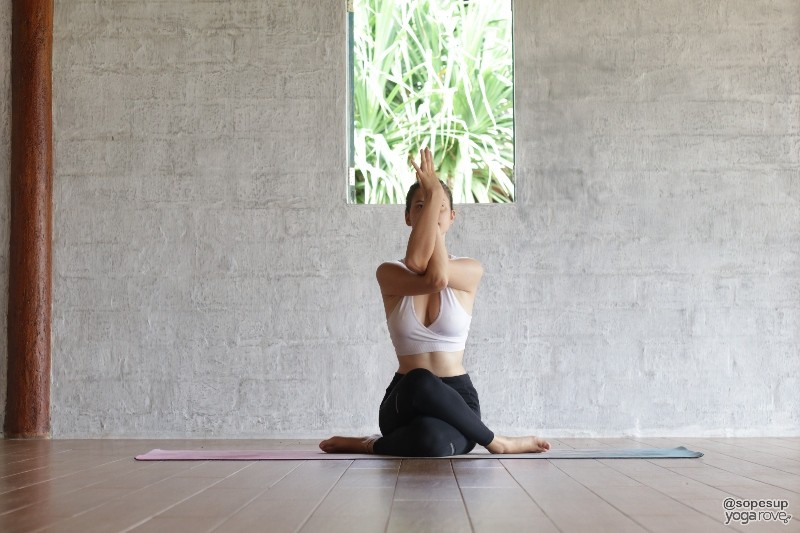
Eagle arms provide a great stretch for both shoulders. The pose shown here is a seated variation of Eagle.
You don’t need to have stacked legs if you have tight hips, you can simply sit in a comfortable seated position or stand while just practicing eagle arms.
How to do Eagle Arms:
- Start by standing or sitting, and place your arms in a goal post position, forming 90 degree angles on either side. Make sure your elbows are inline with your shoulders.
- Start to bring your arms in towards each other and place your right arm behind your left arm, so that your right elbow is resting on the inside of your left elbow.
- Now wrap you left arm as much as you can around your right arm, trying to touch the inside of your right hand. If you can’t completely touch it all the way that’s okay.
- Squeeze your arms in towards each other and actively bring them up to shoulder level.
Modification: If you are unable to do eagle arms, that’s okay. Instead of reaching for your hands to touch, simply allow your hand to grab your wrist or forearm, as long as you feel the stretch!
2. Bow (Dhanurasana)

Bow pose stretches the entire front body, and is especially great for those that sit at a desk all day and tend to hunch, as this pulls everything backwards while strengthening your back.
This pose may seem intimidating when first looking at it, but there are is a simple tool you can use to do it properly and safely that I’m going to show you so you can obtain the amazing benefits.
How to do Bow Pose:
- Start on your stomach with your hands along your sides with palms facing up. Bend your knees and bring your heels in as close as you can to your butt.
- Reach back with your hands and grab onto your ankles.
- If you are unable to reach back with your hands, get a yoga strap (these are the ones I recommend) or if you don’t have one, you can use a sheet or thin towel.
- On your next inhale, slowly lift your thighs off the floor and pull your heels away from your butt. This will naturally lift your chest and pull back your shoulders.
Modification: If you’re using a strap, Instead of reaching back with your hands, wrap the yoga strap around your ankles and use your hands to grip the strap while pulling back on it.
- Make sure your knees and legs stay hip width distance apart, not wider, for the duration of this pose.
- Make sure to keep your shoulders away from your ears and your head in neutral position.
- Repeat on the other side by switching the arm that is underneath.
3. Bridge (Setu Bandha Sarvangasana)

Although Bridge Pose is widely known for the positive effects it has on treModification: If your shoulders are too tight to bring your hands together, feel free to leave them pressed into the mat, or grab a yoga strap and use it to gradually bring your arms together by gripping the strap.
4. Cobra (Bhujangasana)
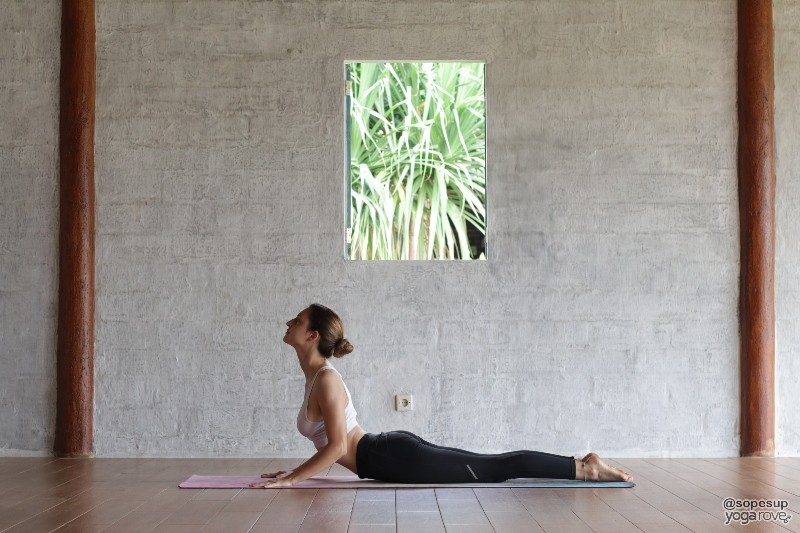
Cobra Pose is a mild backbend that is perfect for beginners trying to improve their shoulder flexibility and open up their chest.
It’s important to make sure you do not overdo the backbend, as doing so could strain your back.
How to do Cobra Pose:
- Start belly down on the floor, with forehead facing down and hands spread underneath your shoulders. Hug your arms into your sides.
- Your legs should be spread out behind you, inner hip width distance apart and the tops of your feet flat on the ground.
- Take a deep breath, then on your next exhale, push up with your hands while lifting through your chest.
- Make sure to push through your pelvis, legs and feet to keep them grounded and distribute the backbend evenly.
Modification: If you feel tension in your back while doing this pose, spread your legs out wider. You do not need to come into full cobra- if you feel a stretch in Baby Cobra, stay there.
5. Fish (Matsyasana)
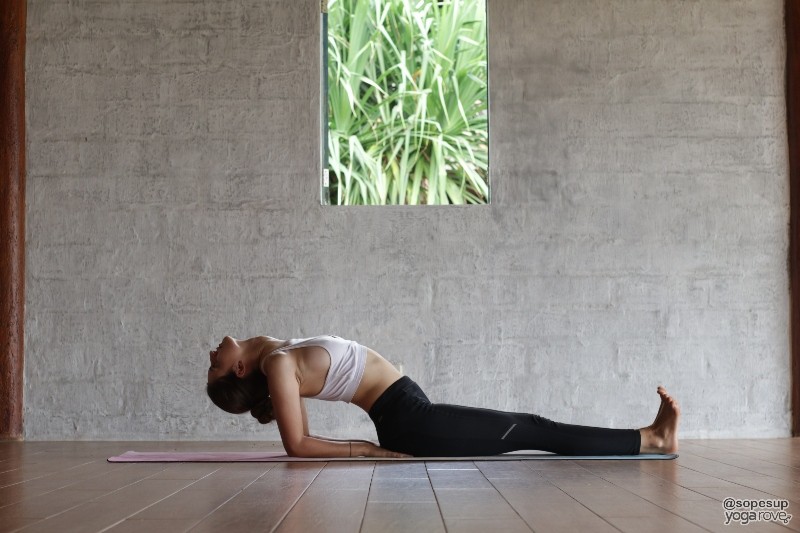
Fish pose is used as a counter pose for inversions such as Shoulder Stand and Plow Pose because of how great it is at stretching the shoulders.
How to do Fish Pose:
- Start on your back with legs flat on the floor and hands by your sides.
- Slightly lift your pelvis and slide your hands underneath your butt.
- On your next exhale, press your forearms into the floor and pull your scapulas into your back while lifting your head and torso off of the floor.
- You can make the backbend as mild as is comfortable for you, but make sure to keep your forearms planted to get the shoulder stretch.
Modification: Feel free to place a block underneath your back for extra support. In this case, you would spread your arms out wide instead of keeping them by your sides.
HIPS
Tight hips are one of the most common complaints from people first starting with yoga. They don’t realize they have tight hips until they see they are unable to do certain poses such as yogi squat or pigeon pose.
6. Pigeon (Kapotasana)
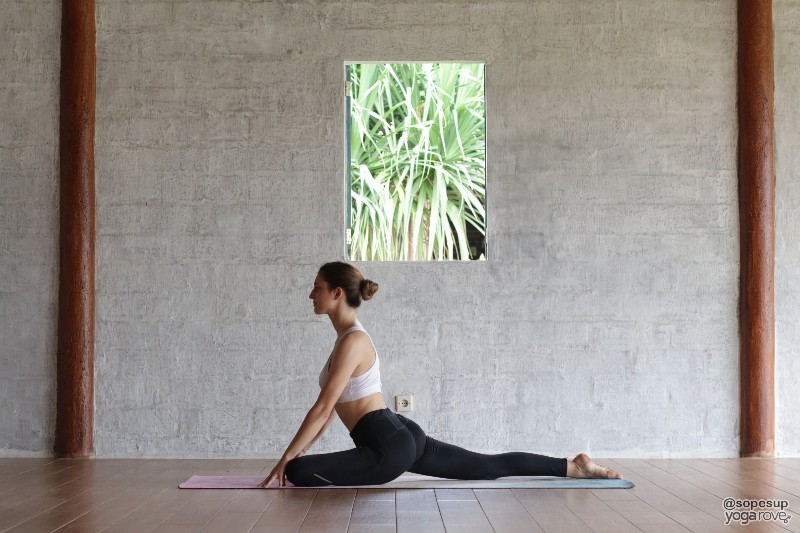
Pigeon Pose is great for stretching your hip flexors, and it is also a great way to reli
7. Cow Face Forward Bend (Adho Mukha Gomukhasana)
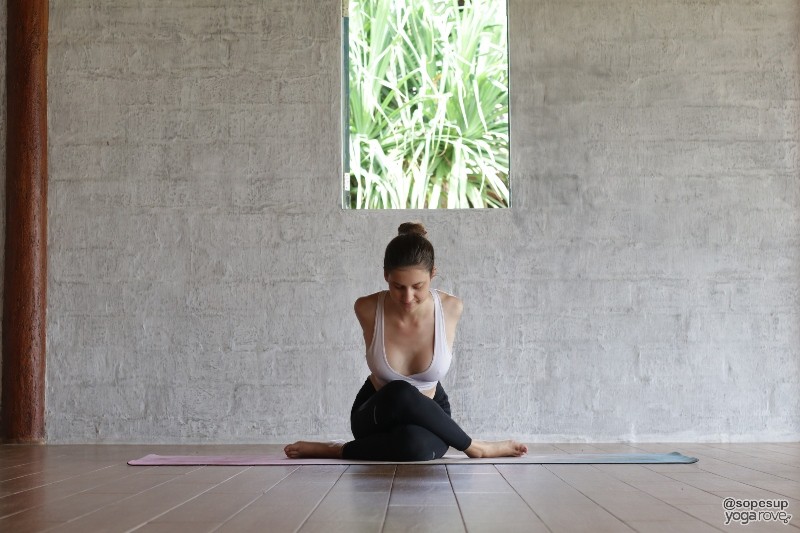
This is a great pose to give you a nice deep stretch in your hips, and is a great pose for those suffering from sciatica.
You can choose to bind your arms (as shown above) or just simply place your hands on the ground in front of you as you fold. The key here is the legs.
How to do Cow Face Forward Bend:
- Start in a seated Staff Pose position.
- Cross your right leg over your left and then bend both knees and slide both feet back towards your hips.
- Your right knee should be stacked on top of your left now.
- Sit tall and place you hands by your sides. At this time you can choose to clasp your hands behind your back, or you can slide them in front of your legs and you slowly fold over your legs.
- You will feel a deep stretch in one of your hips. Make sure to repeat this pose on the opposite side to maintain balance in your body.
Modification: Do not feel the need to bring your arms into a bind, you can simply bring them out in front of you. Also, if you cannot stack your knees due to tight hips, try stacking your calves instead.
8. Wide Legged Seated Forward Fold (Upavistha Konasana)
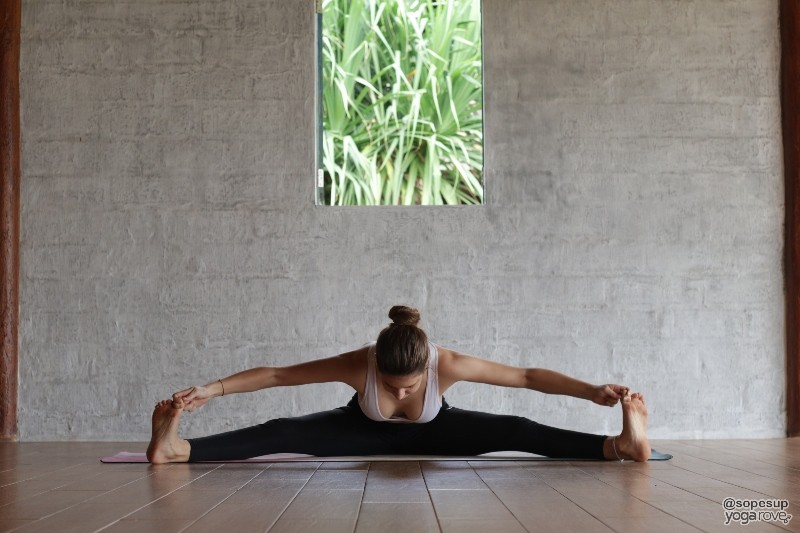
Folding yoga poses have so many benefits in themselves, but Wide Legged Seated Forward Fold is especially great at targeting the hips due to the wide stance.
How to do Wide Legged Seated Forward Fold:
- Start in Staff Pose. Spread your legs out as wide as you can while still maintaining a comfortable seat.
- Flex both feet and make sure they are facing directly up at the ceiling by rotating your thighs.
- With a straight back, lift your arms up overhead before you slowly fold over the middle and reach your hands towards opposite feet.
- It’s okay if you can’t grab your toes here, you can grab onto your ankles or shins as well.
Modification: Use a pillow or bolster in front of you to provide more support if you find it hard to fold your torso forward.
9. Crescent Lunge (Anjaneyasana)
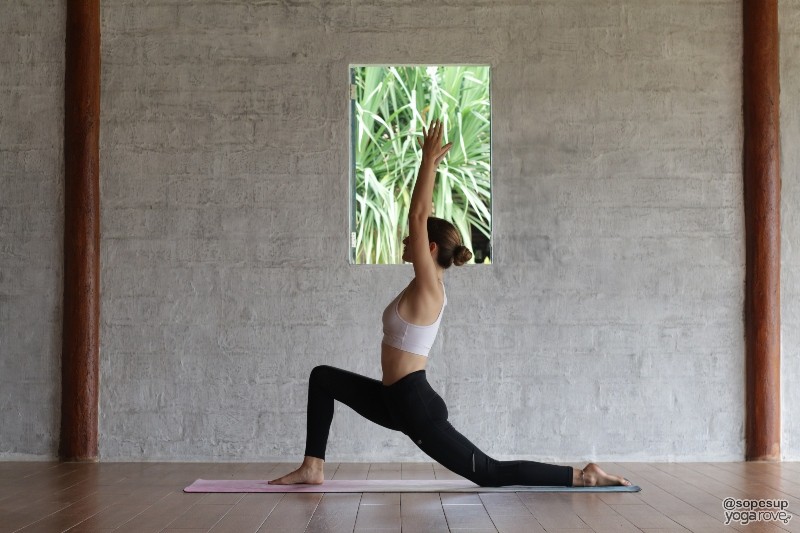
This is one of my favorite poses to do when my hips are feeling extra tight. You feel the stretch instantly and the best part is you can control the severity of the stretch by how much you lean forward.
How to do Crescent Lunge:
- Start on your knees, then bring your left leg forward with your foot flat on the ground. Untuck your back toes.
- With control lift your arms overhead as you start to push your hips forward, sinking into your left knee.
- As you do this, slightly arch your back and lift through your chest.
- If this is too much for you, try placing both hands on your left knee and using them to slowly push forward.
- Make sure to repeat this stretch on the other side. Remember, take it slow and breathe into the discomfort to release all of your tension!
Modification: Place your hands on your front knee for stability and to allow yourself to better control the intensity of the stretch. Pulsing in this pose also helps if you find it very uncomfortable.
10. Three Legged Dog (Eka Pada Adho Mukha Svanasana)
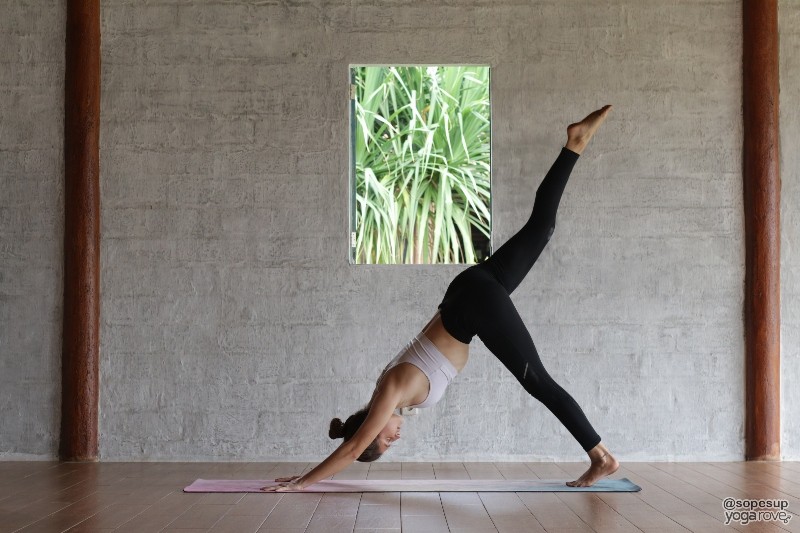
This is similar to Downward Facing Dog, except you are lifting one leg into the air, hence the “Three Legged” name. It is also sometimes referred to as “One Legged Dog” because you are only using one leg.
How to do Three Legged Dog:
- Start in Downward Facing Dog.
- Make sure you are distributing your weight properly throughout your entire body. You will know you aren’t if you feel an intense amount of weight on your arms.
- If this happens, try engaging your core and pushing more through your heels.
- Once you feel grounded, on your next exhale, lift your right leg straight up into the air as high as you can.
- You will immediately feel your right hip open up. For an even deeper stretch, try bending your right leg and opening your hip up to the right side of the room by moving your foot foot towards the left side of your body.
Modification: If you find all of the weight coming onto your upper body, try using two yoga blocks under your hands to elevate the upper body and allow you to focus more on the hip opening portion of this pose.
I hope you enjoyed this list of poses and they serve you well 🙂 I have created an infographic to help you remember all the poses!
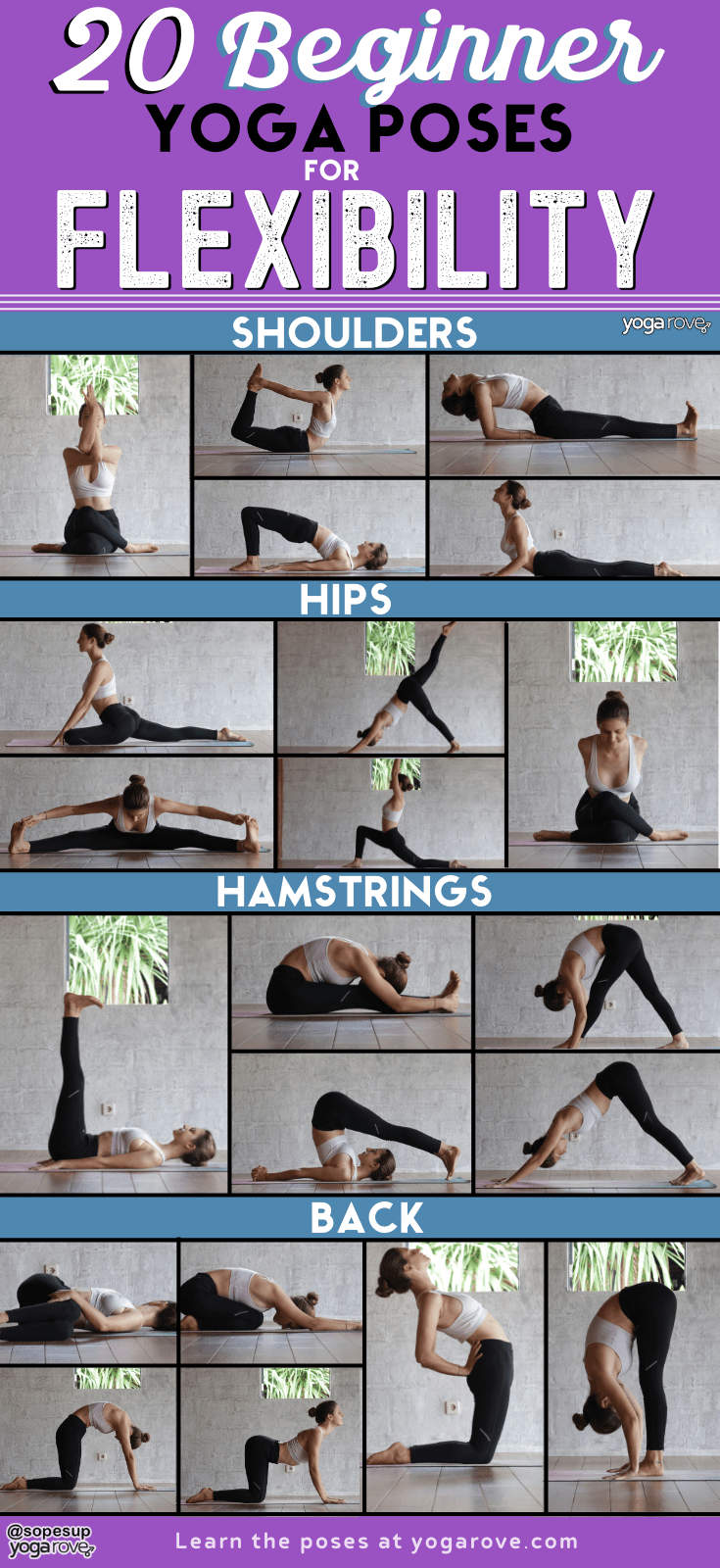



No comments:
Post a Comment